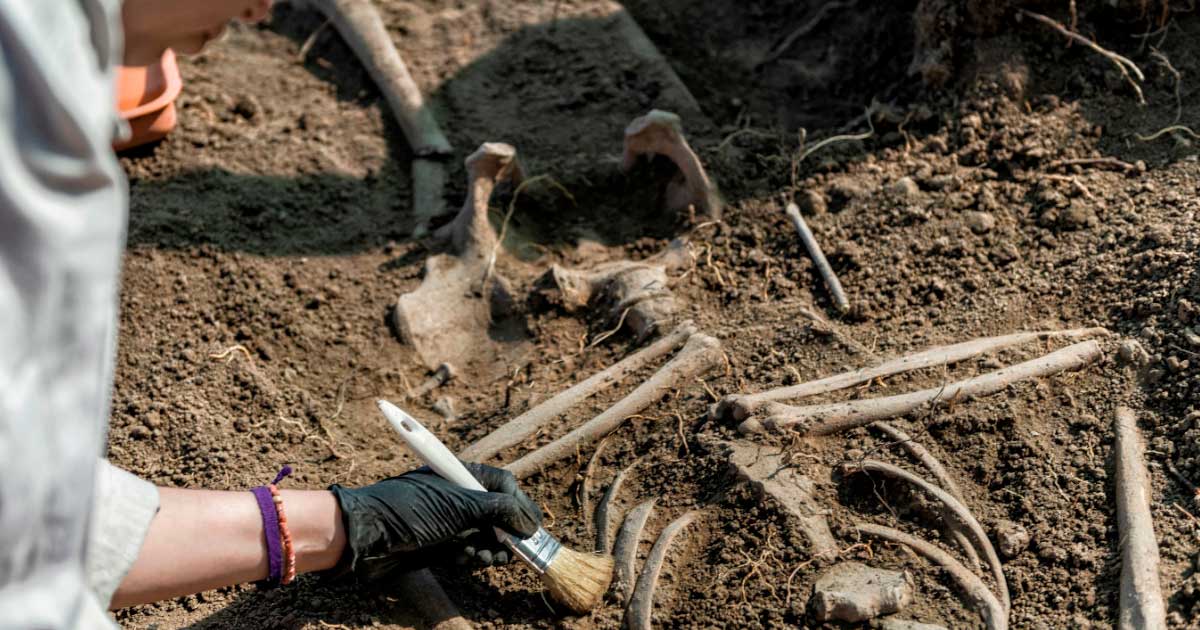Unearthing History: 7 Medieval Skeletons Discovered on Holy Island, England
Construction worker at Lindisfarne car park in Northumberland, England, have uncovered a surprising discovery - a group of seven graves dating back to medieval times.
According to Chronicle Live, the graves were found by Northumberland County Council archaeologists during work to install a new water pipe, just before the new year. The team believes there could be more graves yet to be discovered. The remains have not yet been dated, but they are thought to be medieval or possibly even early medieval.
Lindisfarne, also called Holy Island, has a rich history, with a monastery founded in around 634 by Irish monk St Aidan. The island was also home to Northumberland's patron saint, St Cuthbert, who served as the abbot of the monastery and later as the Bishop of Lindisfarne. The famous Northumbrian figure, St Bede, also chronicled the life of St Cuthbert.
- Medieval Wales: 200 Skeletons Unearthed At Forgotten Coastal Chapel
- Grisly Discovery of Dozens of Beheaded Skeletons in Britain

Lindisfarne Castle on Holy Island, Northumberland, England. Source: Michael Conrad / Adobe Stock
Medieval Northumberland
Northumberland, a county in the northeastern part of England, was shaped by centuries of political and cultural turmoil, from the early medieval period through the Middle Ages.
In the early days, the Angles and the Vikings ruled the land, leaving their mark on the settlements and trade along the coast. But the Normans were to make an even bigger impact when they conquered the area in the 11th century, building imposing castles and towns, such as the iconic Bamburgh Castle, which was a major center of power and administration.
The medieval period also saw the rise of the mighty Percy family, who controlled Northumberland for several centuries and erected grand castles such as Alnwick Castle, which still stands today as the second largest inhabited castle in England.
Religion also played a major role in medieval Northumberland. As well as Lindisfarne Priory, founded by St. Aidan, there was also Tynemouth Priory, one of the most powerful monasteries in medieval England, which left a lasting impact on the region.
The Middle Ages were also marked by battles which shaped the destiny of the land and its people, such as the Battle of Hexham in 1464 and the Battle of Flodden in 1513.
Dating the New Skeleton Discoveries
BBC reports that assistant county archaeologist Nick Best spoke about the findings at a meeting of the Ashington and Blyth Local Area Council, saying "they're very interesting remains" and that the team will be able to get some radiocarbon dates from them. The discovery provides a glimpse into the past and adds to the storied history of Lindisfarne.
Top image: Archaeologists excavating a human skeleton (representational image). Source: Microgen / Adobe Stock.
By Joanna Gillan


















Comments
Construction worker at Lindisfarne car park in Northumberland, England, have uncovered a surprising discovery - a group of seven graves dating back to medieval times.
A key bit of obviously-known information about the find is dubiously missing. How deep under were the bones found? And if they anticipate finding more, what makes them feel that way? Did they hit a tunnel or chamber, that leads on? Would they tell us?
Nobody gets paid to tell the truth.